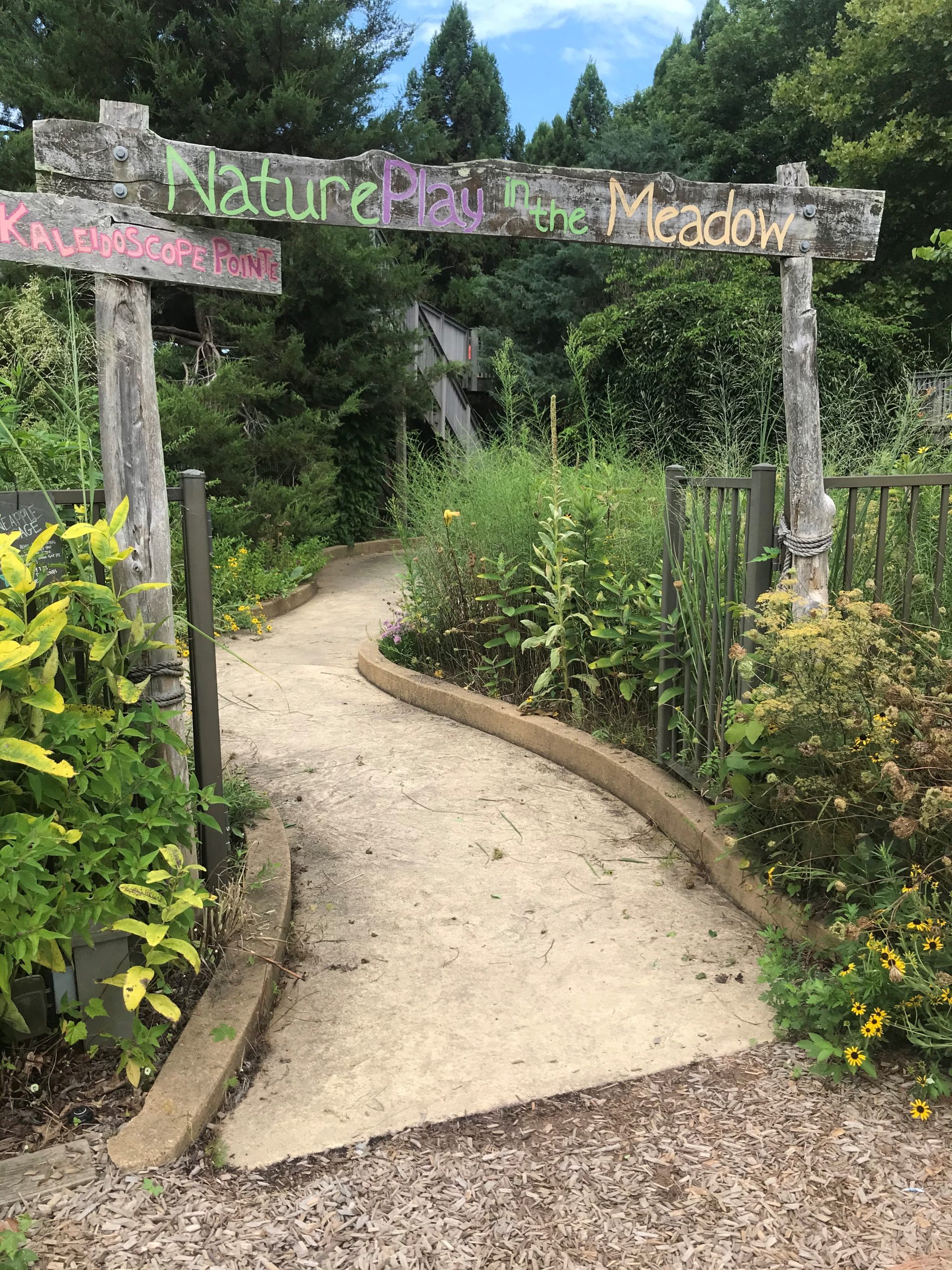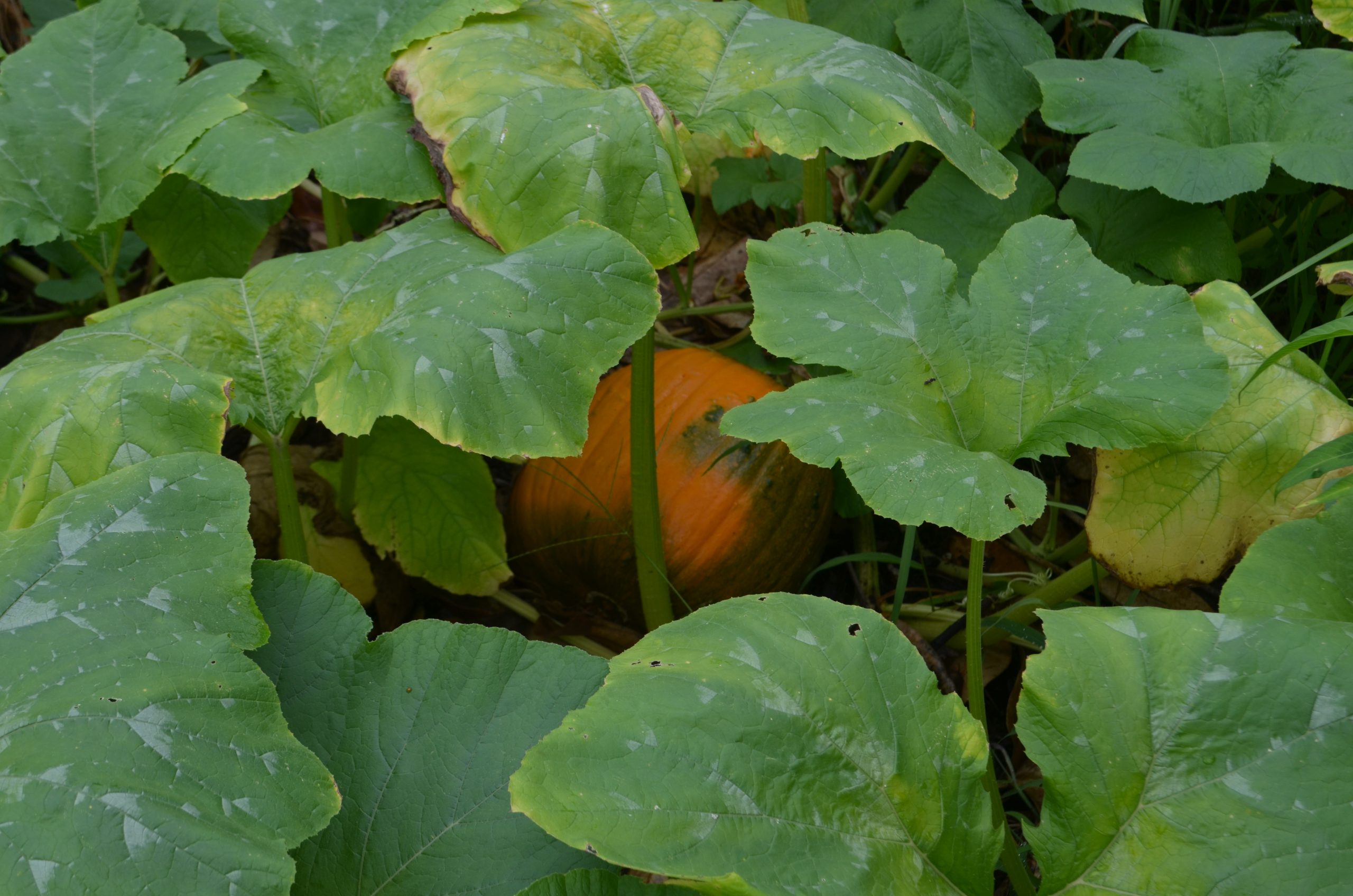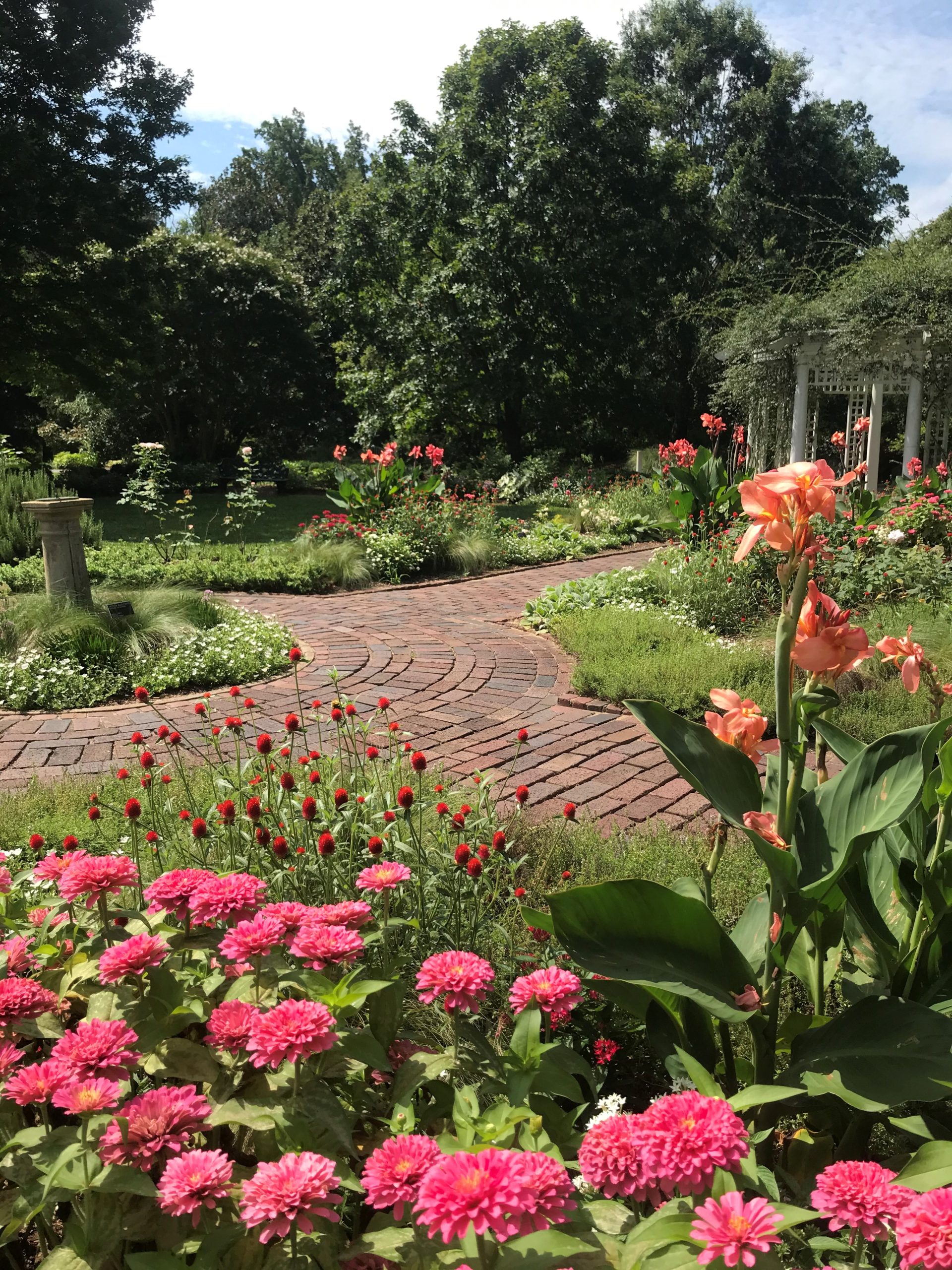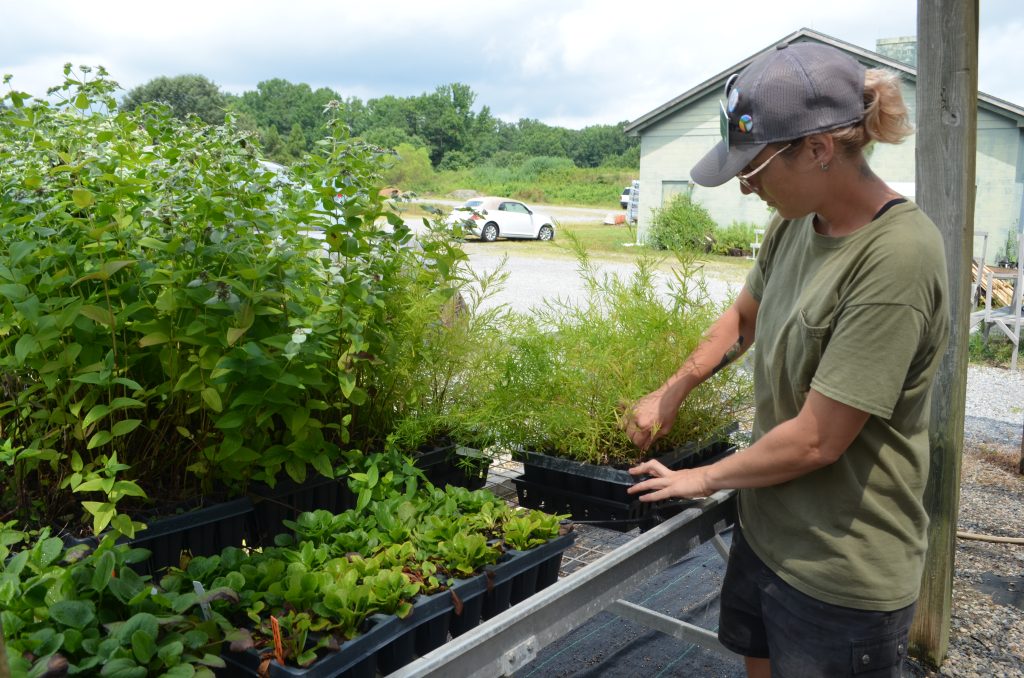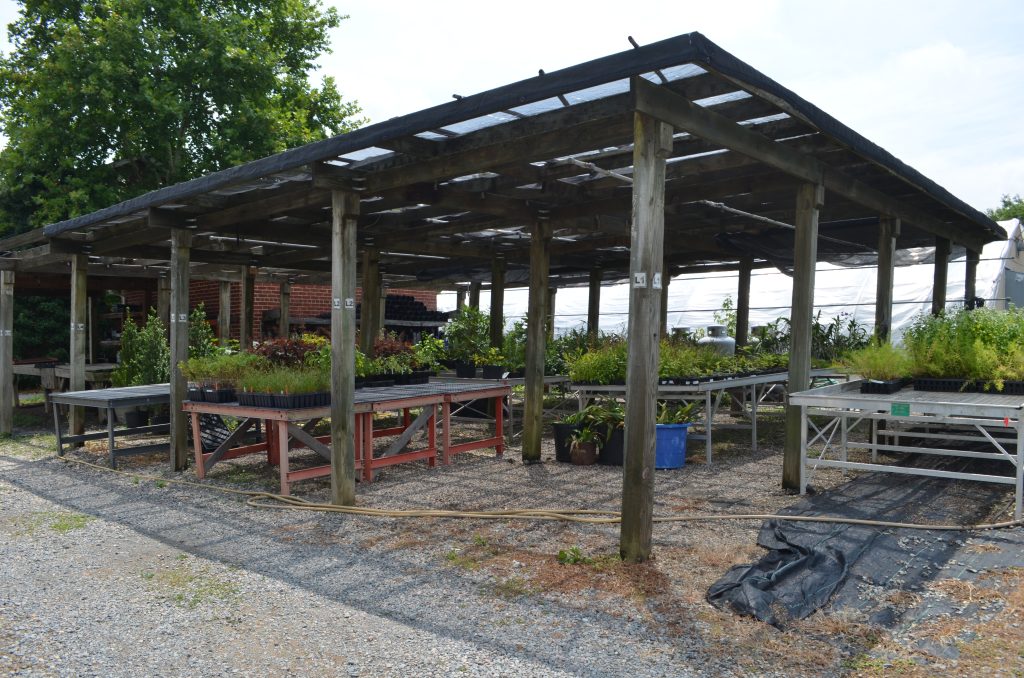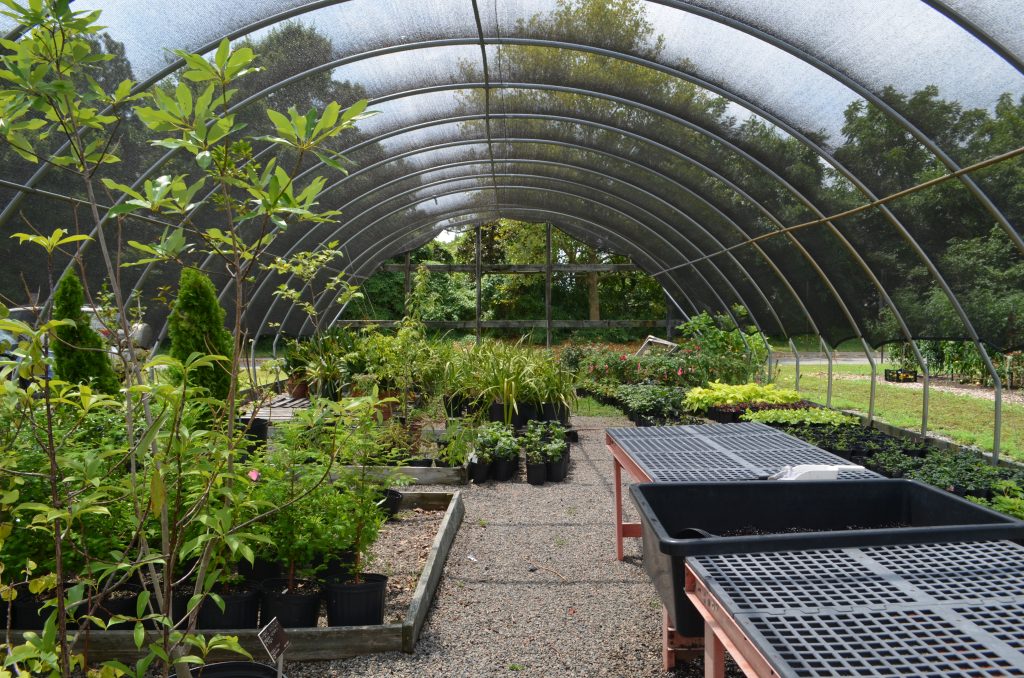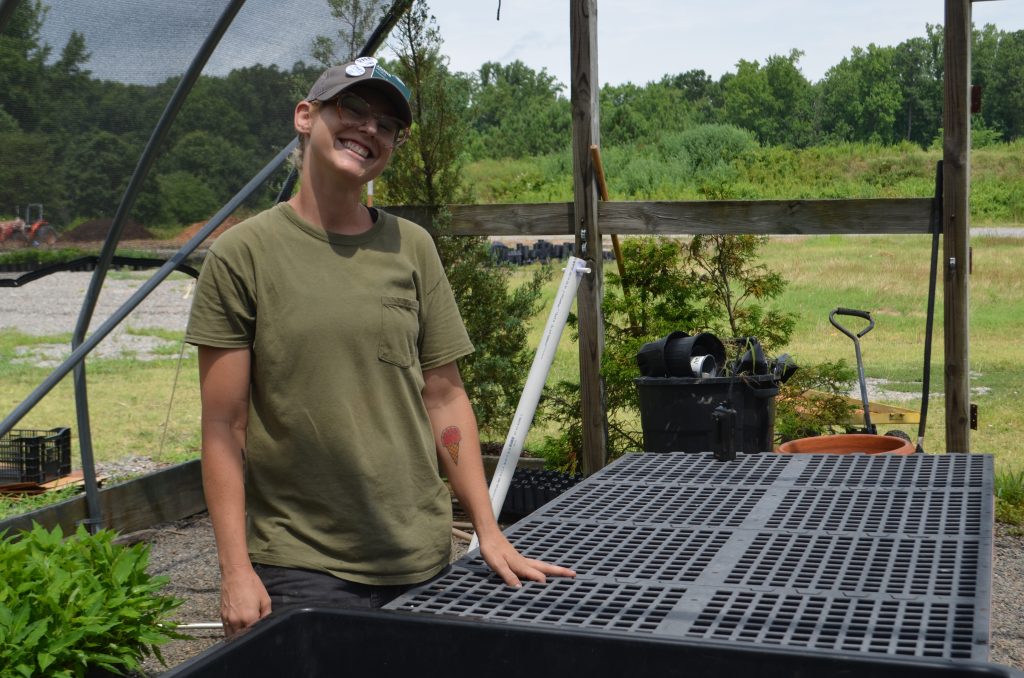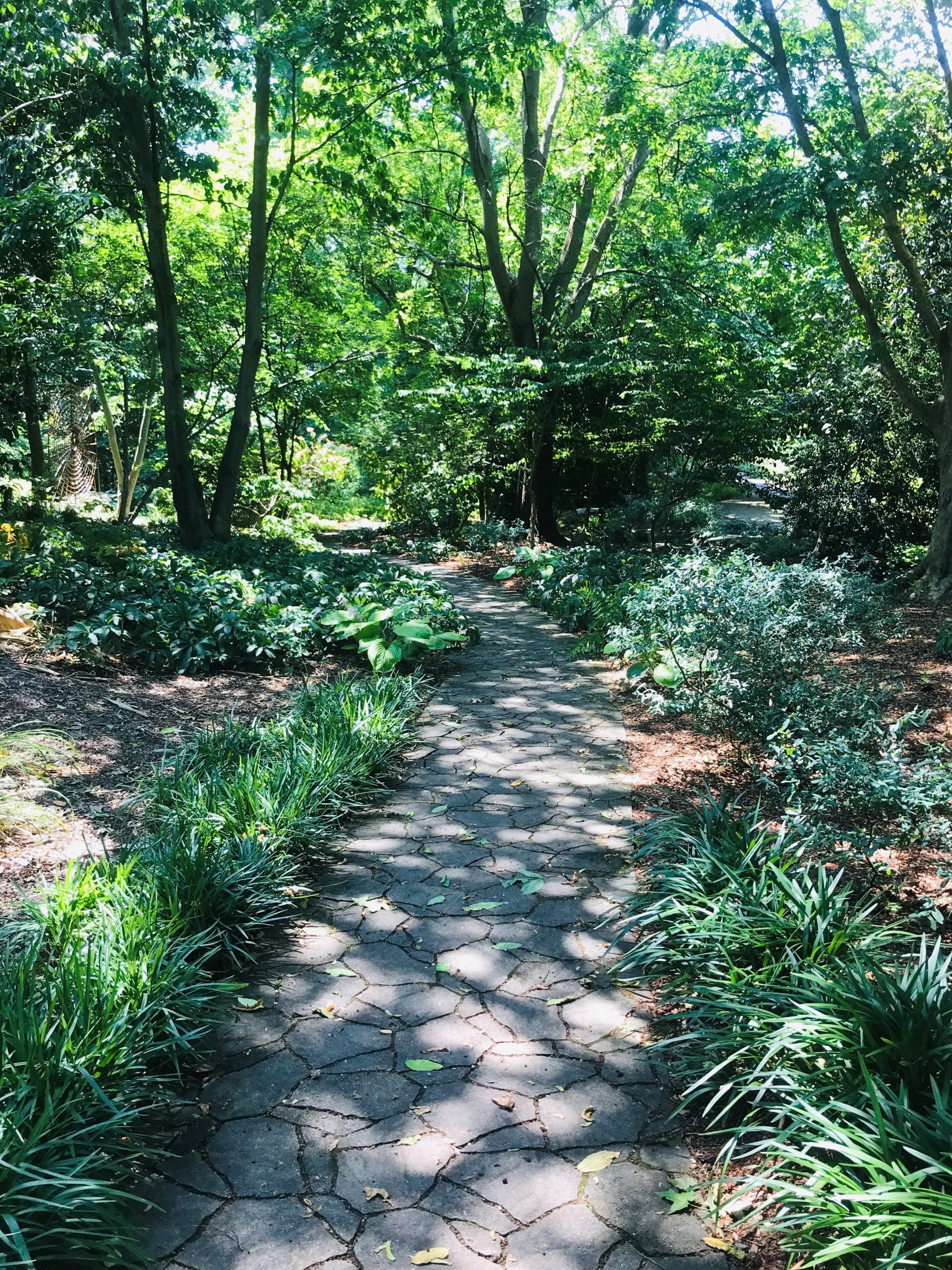Horticulturist — Day in the Life
When strolling through the Garden, visitors admire the gorgeous blooms and the vibrant foliage, but have you ever wondered how the Garden always looks so well-maintained? Some people may not recognize all the behind-the-scenes work that goes into caring for a botanical garden. Who waters the plants, pulls the weeds, and keeps all the greenery alive? It takes a lot of effort from our dedicated volunteers and horticulturists to keep the Garden beautiful year-round for all visitors!
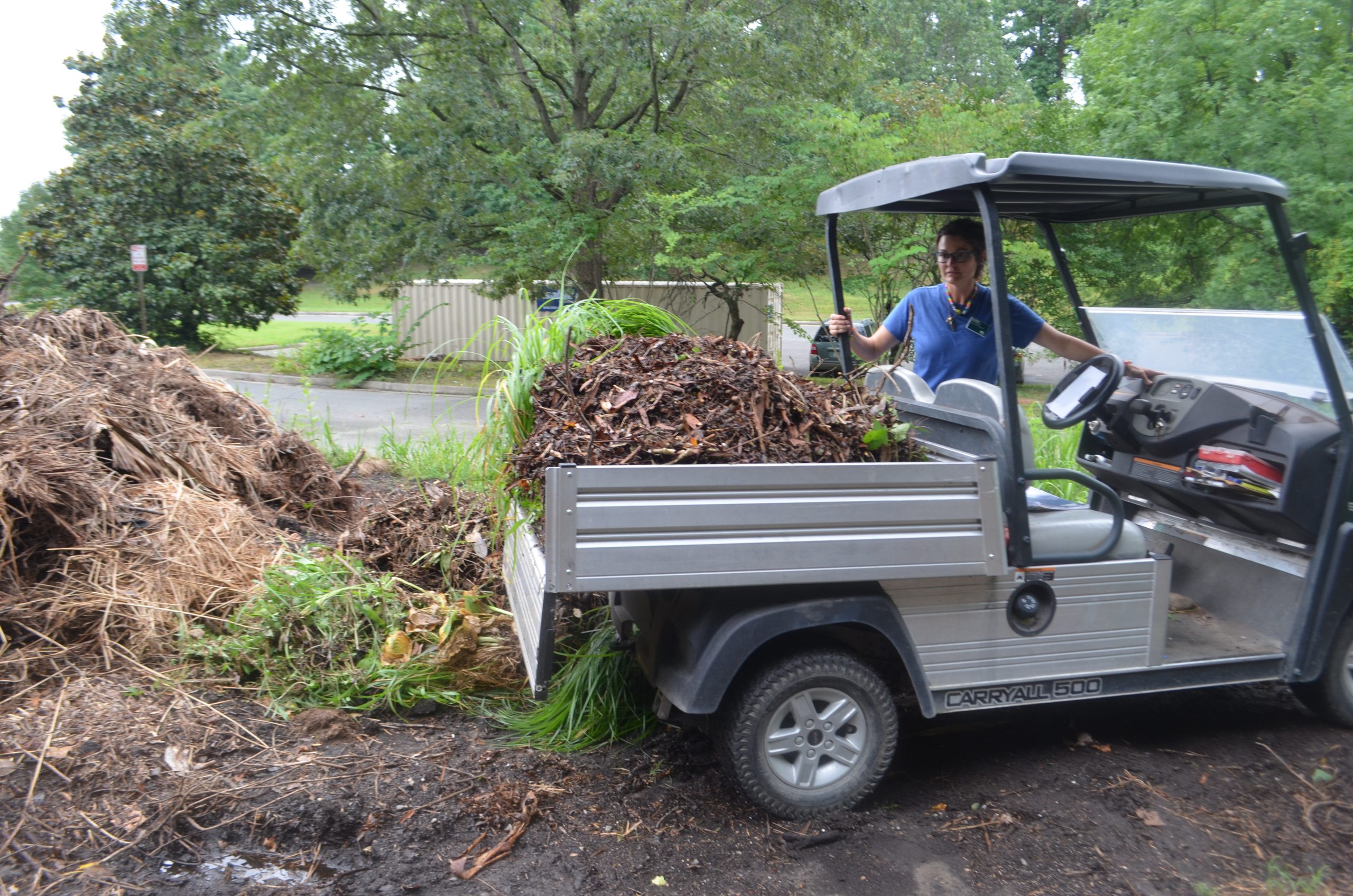
Eloisa Michelle helps to fill the garden cart with discarded plant materials so they can be taken to the compost.
Meet Eloisa Michelle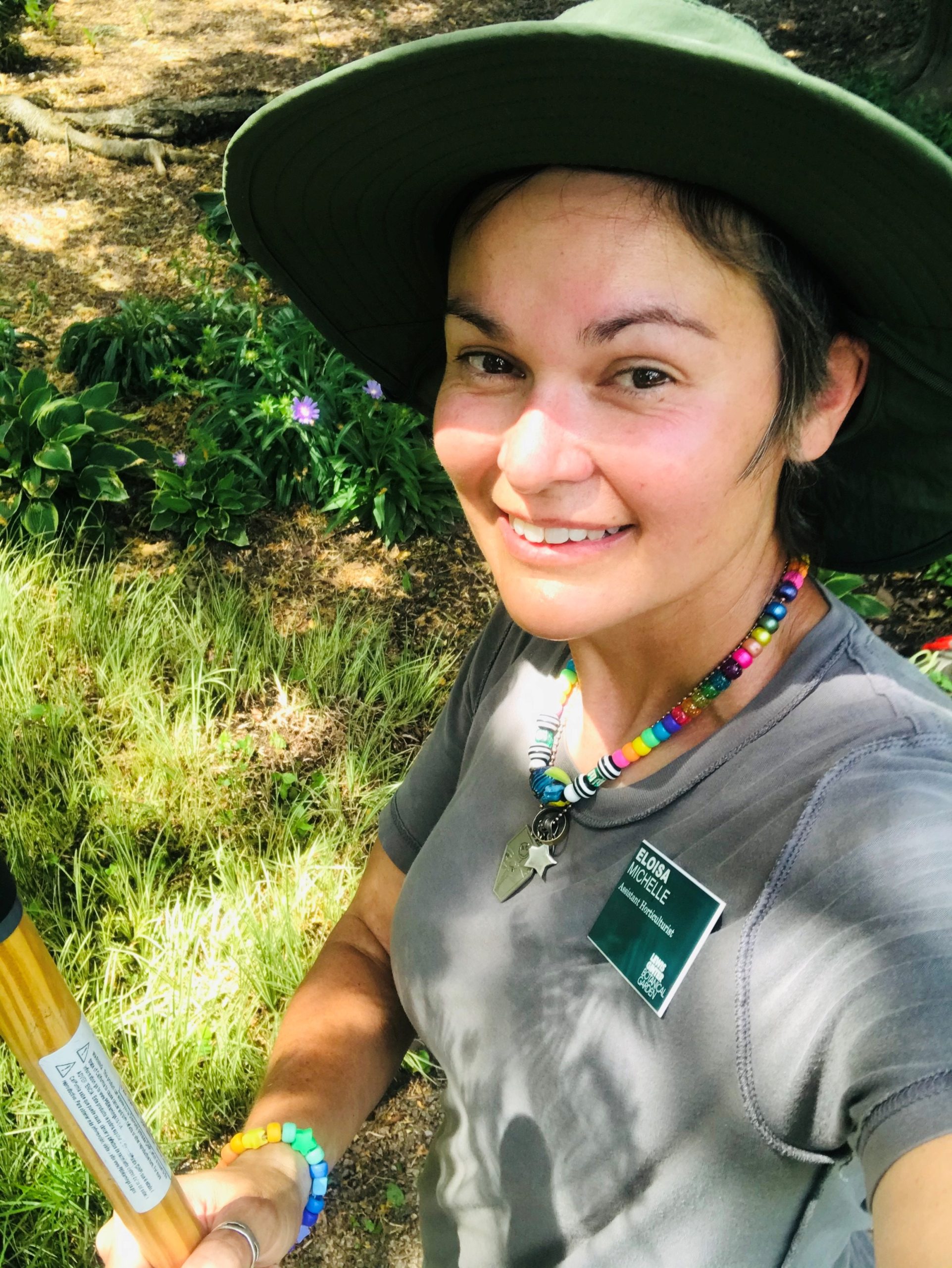
First, I met with Assistant Horticulturist Eloisa Michelle (pronounced E-Loy-Sa), who has 14 years of horticulture experience. It’s her first year at Lewis Ginter Botanical Garden, which offers her a great perspective of viewing our garden with lots of experience and fresh eyes.
Michelle works in the east area of the Garden, including the Children’s Garden, Streb Conifer Garden, Minor Garden (at the north end of the lake), the Cherry Tree Walk, Sydnor Lake area, and Grace Arents Garden. Michelle starts her work day at about 7 a.m by ensuring the various irrigation systems in the area are running correctly. It’s important that plants don’t get too little or too much water. Each area of the Garden has an assigned section leader that oversees tasks. If something isn’t working, like the irrigation system, Michelle notifies her section leader.
Next, she goes through and removes debris from the pathways and does a safety check of the area, removing debris from pathways, like large tree branches that could be obstructing the walkways. She uses a leaf blower to remove small debris. Those branches will be chipped later and used for mulch. She explained that sometimes, after a major storm, so much debris has fallen that you can barely see the path. But you would never know this because Michelle and the other horticulturists clean it up before we open our gates to visitors.
After cleanup, Michelle begins weeding and pruning the gardens. She works on this task with four to five other people in the east area of the Garden; some are horticulturists and others are volunteers. Garden volunteers often work closely with the horticulturists in their designated area.
“We couldn’t do all this without our steady group of volunteers. They are the best! I love working side-by-side with them while they tell me stories of how the gardens have evolved over time. A lot of the volunteers have been here for several years.”
The horticulturist and volunteers deadhead and deposit dead flowers, leaves, or other plant materials into the Garden cart for composting. Depending on the day, they fill the cart bed with plant debris between two and seven times.
Michelle took me on one of her garden cart runs so I could see the massive compost area far beyond the Conservatory and beyond visitors’ view. As she drove up to the curb, multiple piles of composted materials came into view. When disposing of plants from a place as big as Lewis Ginter Botanical Garden’s 82 acres, you need a lot of room!
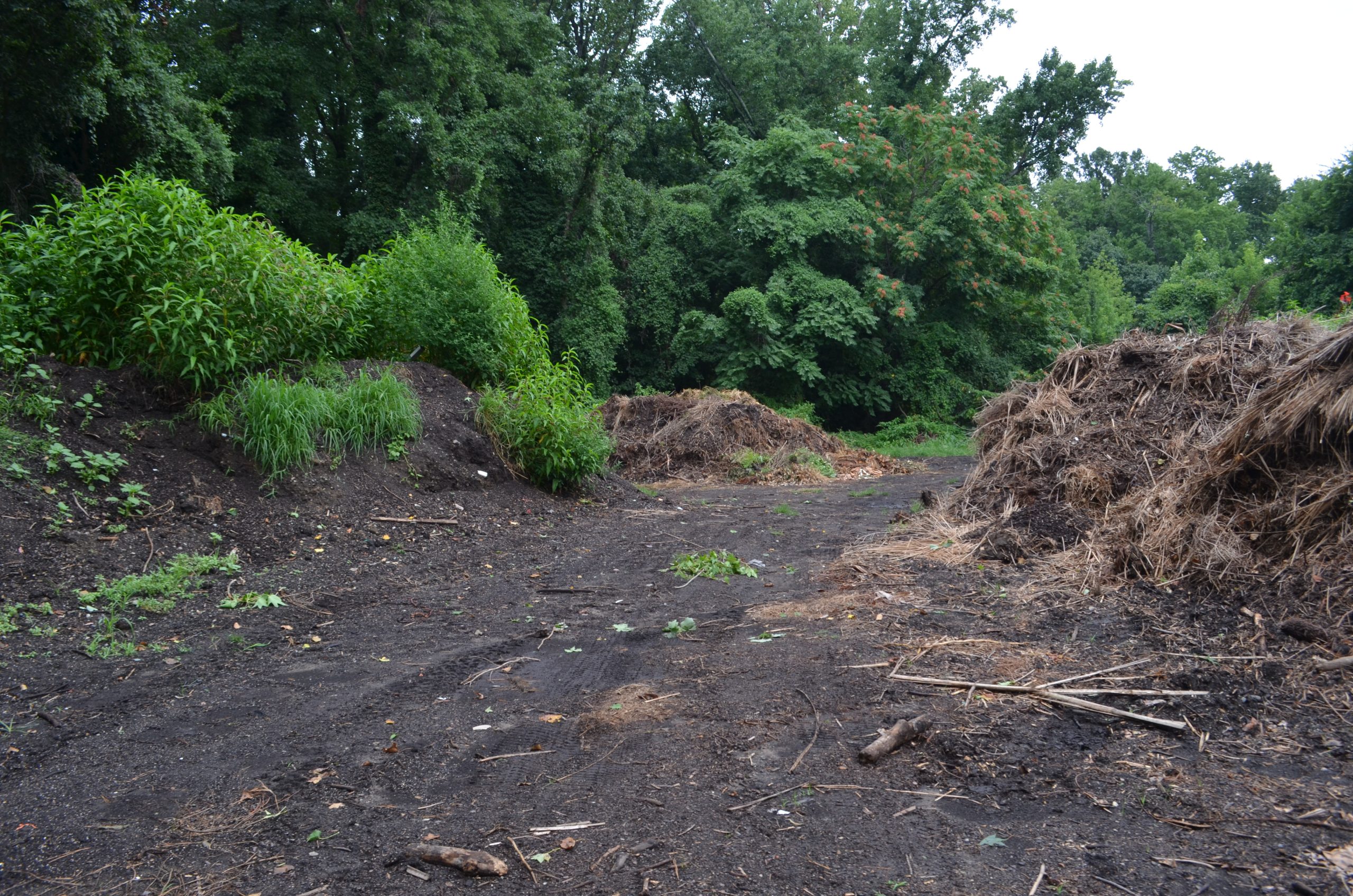
The compost consists of several mountains of materials that occupy the entire area. You can see that some piles are older and more decomposed than others.
Horticulturists bring all of the Garden’s unwanted plant materials to the composting area where it decomposes over time. Eventually, the Garden reuses the composted materials as soil for new plants. Michelle showed me one area with a whole pumpkin patch growing from it. Amazingly, a few composted pumpkins can lead to an entire area of pumpkin plants growing without help. And of course, they know where to find the richest soil, too.
Michelle and the other horticulturists must also protect the plants from harmful diseases. On a walk around the Garden, she pointed out an area with Southern Blight, a fungal disease that can spread through soil.
This disease spreads so easily that if a horticulturist steps in or touches the infected ground, they must sterilize their gloves and shoes so they don’t infect the next area they visit. This is one of the many reasons we ask our visitors not to step into our garden beds! Part of Michelle’s job is to dispose of and isolate the affected plants to keep them from spreading throughout the Garden.
Michelle didn’t initially realize her passion for horticulture. She started with a corporate job, but after working at a garden center, she discovered her love for learning about plants. Her favorite part of her job is working with so many different types of plants and expanding on her botanical knowledge. This is a job where everyone is constantly learning! She considers herself a “steward of the land,” and you can tell she derives a great deal of satisfaction from her work.
Meet Jaimie Woll
Next, I visited Assistant Horticulturist Jaimie Woll. Woll helps care for the Central Garden, Conservatory, and Massey Greenhouse areas. It’s Woll’s job to manage the lily pads and other aquatic plants in the Conservatory pools and to remove any dead foliage in the Central Garden. After spending time with Woll, I noticed how observant she is of her plants. She can spot and remove even the smallest brown leaves or out-of-place twigs on an otherwise healthy plant!
Walking behind the Conservatory, Woll took me on a tour of the various parts of the Massey Greenhouse area. Here, she waters all the potted plants waiting to go on display or being grown for PlantFest plant sale by volunteers. She said this big task could take over four hours to complete!
We walked to the Lathe House, an open wooden structure with several tables of potted plants underneath, located behind the Massey Greenhouse. These plants, Woll explained, are being held for future plantings somewhere in the Garden. Until then, it’s Woll’s job to care for them and keep them healthy.
Across from this area, the Hoop House holds many plants that the Garden sells at the annual PlantFest plant sales. Woll cares for these plants until they’re ready to sell. The Hoop House also contains plants Woll houses between bloom periods, where she moves them into the Conservatory.
Woll previously worked as a horticulturist at an arboretum before coming to the Garden. Last year, Woll worked part-time at the Garden for about six months, but this summer, she became a full-time horticulturist. Seeing how Woll interacts with plants reminds me of how a nurse cares for her patients. She diagnoses the issue a plant may be having and nurses it back to health. Woll pays attention and listens to each plant’s needs so that she can give the best care possible.
In addition, Woll expressed how much she enjoys interacting with visitors who appreciate nature as much as she does! She especially loves educating people about plants. Within the short time I spent with Woll, she enthusiastically shared all kinds of advice for my indoor houseplants! Anyone who meets her can tell she truly enjoys what she does. Woll explained that her job not only enables her to contribute to the Garden’s beauty but it is also her way of giving back to nature.
Seeing the Garden through Michelle and Woll’s eyes, I’ve come to appreciate all the little details involved in keeping it alive. Next time you visit the Garden, remember our hard-working horticulturists who make everything possible!
